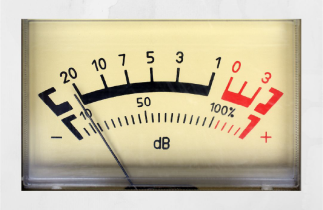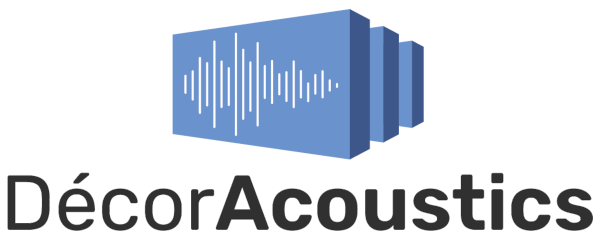Acoustic Modules (Series: Education in Acoustics)

Module #4
What is the dB ‘sweet spot’?
In Module #2, we learned about measuring sound, its wavelength, and how reverberation time is used to analyze sound dynamics within certain spaces.
In Module #3, we learned about NRC levels and why they matter. In this Module, we will look generally at what have been shown to be ideal sound levels based on certain applications and spaces, as well as provide a high-level overview of different methods of assessing sound within the different types of spaces.

Different types of spaces have different decibel level guidelines, depending on the purpose of the space and the level of noise that is typical for that environment. It is important to note that decibel level guidelines are not fixed rules, and can vary depending on various factors, such as the length of exposure time and the frequency of the sound. Some individuals may be more sensitive to noise than others, which can impact their comfort level in a particular space. Overall, decibel level guidelines provide a helpful framework for assessing and managing noise levels in different types of spaces, and in turn it allows individuals and organizations to take steps to ensure that the sound environment is safe, comfortable, and conducive to the intended use of the space.
Here are some general guidelines for some common types of spaces:








Actual guidelines developed by organizations:
American National Standards Institute (ANSI) developed S12.60-2010 Acoustical Performance Criteria, Design Requirements, and Guidelines for Schools, and the ASTM E1007-13 Standard Guide for Acoustic Performance Criteria, Design Goals, and Coordination for Schools. These codes and standards specify requirements for sound isolation between classrooms, speech intelligibility in classrooms and other learning spaces, background noise levels, and reverberation times. They also provide guidelines for the selection and placement of sound-absorbing materials and other acoustical treatments to optimize the acoustical environment in schools. (The publication can be purchased here: https://webstore.ansi.org/standards/asa/ansiasas1260part2010r2020).
American Society of Heating, Refrigerating and Air-Conditioning Engineers (ASHRAE) also have specific standards for schools and other educational facilities, such as the Standard 62.1-2019 Ventilation for Acceptable Indoor Air Quality and Standard 90.1-2019 Energy Standard for Buildings Except Low-Rise Residential Buildings, which also deal with acoustics in the building design and HVAC design. The Standard 180-2018 provides requirements and guidelines for the design, construction, and commissioning of high-performance green buildings.
American Disabilities Act (ADA) also includes requirements for acoustics in educational facilities, which ensure that people with disabilities have equal access to information and communication in these spaces.

We recommend downloading the ‘Noiserater’ APP (available in IOS and Android versions) as a simple, useful and accurate Sound level measurement tool. It provides an immediate analysis of the overall decibel level of the space you are in. In addition to be highly functional, what is unique about the APP, is that it enables you to upload time-stamped data for the location (restaurant, hotel, etc.) where you took the reading, and then it is stored on an open-access database so others can also access your data. This enables you, and others, to analyze the dB ratings of a certain establishment relative to the level(s) that each individual determines as ideal for their personal comfort. In short, you can go to certain places at certain times , where the sound level is comfortable, and you can avoid the spaces and times that you might historically find unappealing.
Though we focused on ‘Noise level testing’ (as referenced above – via the decibel guidelines, and the Noisereater APP), there are other test methods that can be used to analyze sound within a space, each having their own unique set of parameters, equipment, and protocols. Understanding these test methods and their applications can help individuals and organizations evaluate and optimize the acoustic quality of a space.
The other main test methods for analyzing sound within a space are:
-
- Room acoustics testing: Room acoustics testing involves taking measurements of various acoustic parameters within a room, such as reverberation time, sound pressure level, and speech intelligibility. This testing can be performed using specialized equipment, such as sound level meters and acoustic analyzers, and can be compared to established criteria for the space type.
- Sound transmission testing: Sound transmission testing involves measuring the amount of sound that passes through a partition between two spaces, such as a wall or ceiling. This testing can be performed using specialized equipment, such as sound transmission class (STC) meters, and then can be compared to established criteria for the space type.
- Speech intelligibility testing: Speech intelligibility testing involves assessing the ability to understand speech within a space. This can be done by playing back a recorded speech signal and measuring the amount of distortion and background noise present in the playback. Speech intelligibility testing can be used to assess the suitability of a space for communication-intensive activities, such as meetings or lectures.
- Vibration testing: Vibration testing involves measuring the levels of vibration within a space, such as those caused by machinery or construction activities. This testing can be performed using specialized equipment, such as accelerometers, and can be compared to established criteria for the space type.

Overall, the test method protocols for assessing sound in different types of spaces depend on the specific characteristics of the space and the intended use. By using appropriate testing techniques and comparing the results to established criteria or standards, the acoustic quality of a space can be assessed, and improvements can be made to ensure acoustic comfort.

